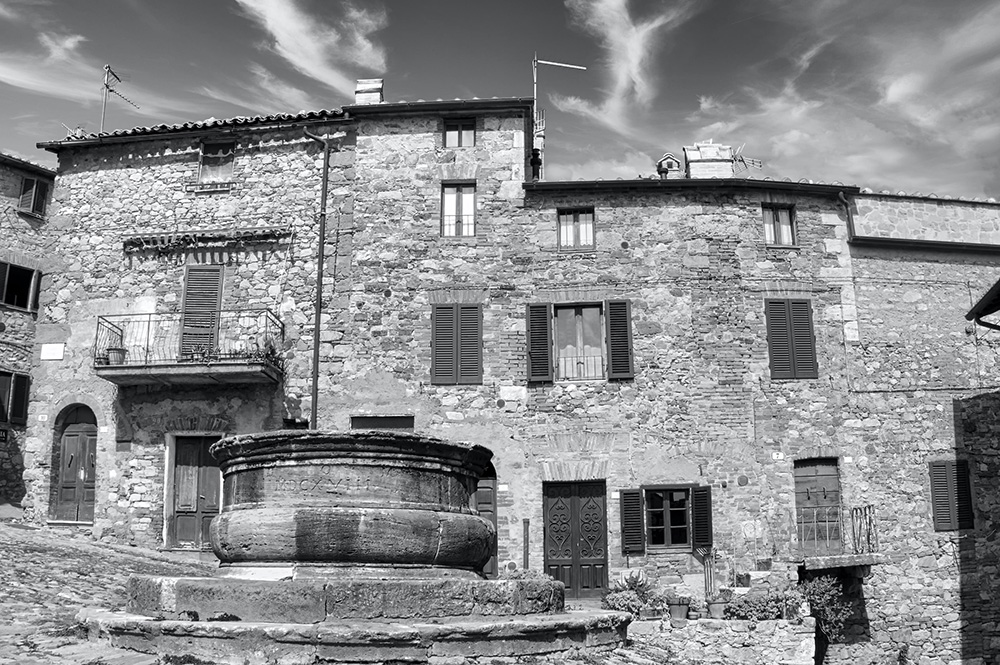Several Italian towns have made headlines recently for listing homes for less than a cup of coffee.
In an attempt to reinvigorate rural areas, the Italian 1-euro Housing Initiative has attracted hundreds of buyers and even more inquiries. However, although the low-cost property is a helpful driver, it’s important to weigh all the pros and cons before making this 1-euro investment.
Why is Italy selling homes for 1 euro?
The 1-euro housing program was initially proposed by TV personality Vittorio Sgarbi in 2010, who saw an opportunity to repopulate deteriorating towns. From there, the proposal took effect and has since been adopted by 34 municipalities across Italy. The idea is that the influx of homeowners will stimulate the economy, that has faced a slowdown, through the purchase of goods and services, local venues and entertainment, and even encourage tourism through boutiques and rentals.
While some houses offered through these programs are in better shape than others, the chances are that you’ll most likely be purchasing medieval-era architecture that is badly in need of modern renovations. Many homes are also located in remote, mountainous areas with limited access to public transportation.
How does the 1-euro Housing Initiative work?
Although the official cost of the home is 1 euro, you should factor in about 3,500 to 4,000 euros in fees and closing costs.
Much like any other real estate investment, there will also be paperwork to review and sign. And since the purchase is being made in Italy, you can expect that the contract and notices will also be written in Italian. Depending on the municipality, you may also be required to create an Italian LLC for the acquisition. So before progressing, you might want to consider hiring an attorney to help protect your interests and investment.
A large caveat to this transaction is having a plan to renovate. Renovating the home is a requirement in most municipalities offering 1-euro properties, and it must be done within three to five years, or you’ll have to forfeit a sizable deposit made at close. This deposit is held as a retainer to ensure buyers actually renovate the properties instead of letting them sit. However, the cost of renovations is still relatively low compared to other countries.
This long-term strategy is attractive for those looking for cheap and simple housing surrounded by important artworks, meaningful history, and beautiful views.

Who can buy 1-euro home in Italy?
This 1-euro Italian Housing Initiative is open to anyone who is willing to take on the home renovations that come with it. That means that any non-EU resident is unrestricted from purchasing property in Europe, even if that property is listed for 1 euro.
For non-Italian residents, you will need to request the Italian tax code in order to make tax payments. The tax code, a unique identification number given to every Italian citizen, is issued by the Revenue Agency. However, it can be requested abroad, both by Italians and foreigners, through the Consular Office.
Although foreigners have the ability to take part in the Housing Initiative, many municipalities require that interested buyers come visit the municipality before purchasing. This step gives the buyer a chance to see just how much renovation is required before they commit.
Where can you buy 1-euro homes?
Since homeownership is a little out of reach for many first-time buyers – especially in the US and the UK – a listing for 1 euro is a dream come true. So much so that many towns only have a handful of properties left.
So where can you find a 1-euro home?
Affordable housing spans across Italy, both on the north and south side of the Italian peninsula giving buyers ample choice of climate and territory.
Abruzzo, a central Italian region hugging the coast just east of Rome, is predominately mountainous and boasts beautiful views of the Adriatic Sea. It consists of four provinces: L’Aquila, Teramo, Pescara, and Chieti. The sprawling cobbled streets, olive groves, and vineyards make Abruzzo a sought-after region for both locals and tourists.
Here, you can find 20th-century four-story homes with a basement at really low prices. Many of these homes haven’t been lived in for decades, but most have received recent roof repairs to help avoid structure deterioration.
Towns within Abruzzo raffling off 1-euro homes include Casoli, Santo Stefano di Sessanio, and Pratola Peligna.
Italian government offers financial incentives
There are many perks to purchasing a 1-euro home. Various monetary incentives offered by the Italian government for restoring abandoned properties include a tax deduction of 110% on the expenses incurred during some types of restoration. To be applicable, the restoration work must improve the property’s energy efficiency rating or reduce its seismic risk.
To entice buyers to stay in the local area, some incentives encourage newly purchased properties to be used as permanent residences, thereby boosting the town’s population and economy. In the south of Italy, for example, freelancers who move their official residence there only pay taxes on 10% of their annual income.
Other incentives include:
Renovation bonus: the objective is to incentivize maintenance, restoration, and renovation work on the property’s interior. Buyers can take advantage of a tax deduction of 50% of the renovation expenses (up to a maximum of 96.000 euros).
Facade bonus: to encourage buyers to renovate the building’s external facade by painting it or by carrying out repairs, buyers can take advantage of a tax deduction amount of 90% of the external renovating expenses.
The bottom line
Although the final price of 1 euro real estate is going to require a couple of thousand extra euros to restore, the actual final price will most likely still be lower than anything listed for sale in the US or the UK.
With foreigners and locals jumping at the chance to purchase a low-budget investment, an increase in construction, plumbing and electrical businesses has brought bustling business to restaurants, cafes, and hotels – breathing new life back into the local economy.





